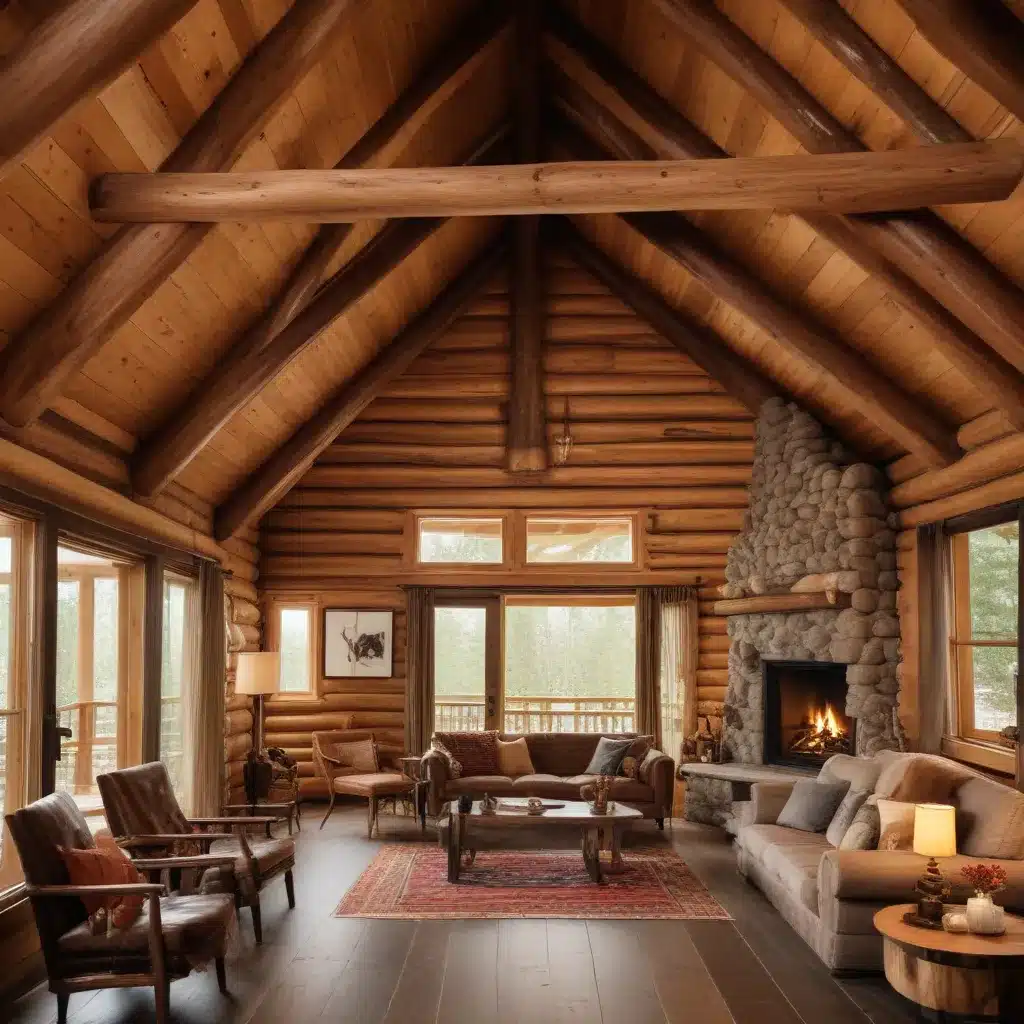
Embracing Tradition: Blending Native Aesthetics in Log Home Design
Log cabins have long been a beloved symbol of American frontier life, but their design has evolved over time to incorporate diverse cultural influences. One such influence is the incorporation of indigenous elements, which can add unique character and a deeper connection to the land. In this article, we’ll explore how homeowners and builders can thoughtfully integrate Native American design principles into their log home projects, creating structures that are not only visually stunning but also respectful of the surrounding environment.
Honoring the Land: Sustainable Log Home Construction
When building a log cabin, it’s crucial to consider the impact on the local ecosystem. Many Native American building traditions emphasize a deep respect for the land and the responsible use of natural resources. This philosophy can be applied to modern log home construction through the use of sustainably sourced materials and eco-friendly building techniques.
One such technique is the utilization of local timber species. Instead of relying on mass-produced lumber, log home builders can work with regional tree varieties that are abundant in the area. This not only reduces the carbon footprint of transportation but also ensures that the materials used are well-suited to the local climate and soil conditions. According to the USDA Forest Service, this approach can improve the overall energy efficiency and longevity of the log home.
Additionally, many Native American tribes have developed traditional building methods that prioritize the sustainable use of resources. For example, some tribes used a technique called “post and beam” construction, where the weight of the structure is distributed across a series of vertical posts and horizontal beams. This method not only reduces the amount of timber required but also allows for greater flexibility in the layout and design of the home.
Embracing Natural Lighting: Passive Solar Design
Another way to incorporate indigenous influences into log home construction is through the use of passive solar design principles. Many Native American communities have long recognized the benefits of harnessing the sun’s energy to heat and cool their dwellings.
By strategically placing windows and orienting the home to maximize natural light, log home builders can create a comfortable and energy-efficient living space. Research has shown that passive solar design can reduce a home’s energy consumption by up to 50%, resulting in significant cost savings for homeowners.
Furthermore, the use of natural materials like stone and earth can help regulate the indoor temperature, reducing the need for artificial heating and cooling systems. This approach not only aligns with traditional Native American building practices but also contributes to the overall sustainability of the log home.
Embracing Natural Textures: Rustic Finishes and Organic Materials
One of the hallmarks of indigenous architecture is the use of natural, unfinished materials that blend seamlessly with the surrounding landscape. This aesthetic can be easily incorporated into log home design through the use of rustic finishes and organic materials.
Instead of relying on manufactured, high-gloss materials, log home builders can showcase the inherent beauty of the wood by leaving it in a more natural state. This could include leaving the log’s outer bark intact, using hand-hewn beams, or incorporating locally sourced stone or clay for the home’s foundation and chimneys.
By embracing these natural textures and materials, homeowners can create a warm, inviting atmosphere that pays homage to the region’s cultural heritage. Research has shown that the use of natural materials in the built environment can have a positive impact on human well-being and psychological health, further enhancing the overall living experience.
Customizing the Interior: Incorporating Indigenous Artwork and Furnishings
While the exterior of a log cabin can be a canvas for incorporating indigenous design elements, the interior can also be a space to celebrate Native American culture. Homeowners can work with local artisans and craftspeople to incorporate traditional artwork, textiles, and furnishings into their log home.
This could include anything from handwoven rugs and wall hangings to intricate woodcarvings and pottery. By supporting local indigenous artists and integrating their work into the log home’s decor, homeowners can create a truly unique and culturally enriched living space.
Embracing the Outdoors: Blending Indoor and Outdoor Spaces
Many Native American building traditions emphasize the importance of seamlessly integrating the home with the surrounding natural environment. This principle can be applied to log home design through the use of large windows, open floor plans, and outdoor living spaces.
By creating a strong connection between the interior and exterior of the log cabin, homeowners can foster a sense of harmony and connection with the land. This can be further enhanced through the use of natural materials, such as stone or wood, in the home’s landscaping and outdoor structures.
Additionally, the incorporation of traditional Native American garden designs or the use of native plant species can help to create a cohesive and ecologically-minded outdoor living space.
Celebrating the Journey: Maintenance and Longevity
Maintaining the character and integrity of a log cabin with indigenous design elements is an ongoing process. Homeowners must be prepared to invest time and resources into regular maintenance and restoration to ensure the long-term preservation of their home.
This may include tasks such as re-chinking the logs, treating the wood to protect against weathering, and carefully restoring any traditional artwork or carvings. By prioritizing the care and upkeep of their log home, homeowners can ensure that their investment in cultural heritage remains a source of pride and inspiration for generations to come.
In conclusion, the incorporation of indigenous design elements into log home construction can create a truly unique and meaningful living experience. By embracing sustainable building practices, natural materials, and traditional craftsmanship, homeowners can honor the rich cultural heritage of the land while enjoying the timeless beauty and comfort of a log cabin. For those interested in exploring this approach further, we encourage you to visit Jørgensen Log Homes, a leading provider of custom-built log cabins and timber frame homes in the United States.


